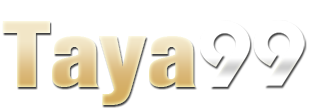 (FILES) This photograph taken on September 14, 2023, shows a USB-C plug reflected on the Apple logo in Brest, western France. – EU rules requiring all new smartphones, tablets and cameras to use the same charger came into force on December 28, 2024, in a change Brussels said will cut costs and waste, after manufacturers are now obliged to fit devices sold in the 27-nation bloc with a USB-C, the port chosen by the European Union as the common standard for charging electronic tools. (Photo by Fred TANNEAU / AFP)
(FILES) This photograph taken on September 14, 2023, shows a USB-C plug reflected on the Apple logo in Brest, western France. – EU rules requiring all new smartphones, tablets and cameras to use the same charger came into force on December 28, 2024, in a change Brussels said will cut costs and waste, after manufacturers are now obliged to fit devices sold in the 27-nation bloc with a USB-C, the port chosen by the European Union as the common standard for charging electronic tools. (Photo by Fred TANNEAU / AFP)
Brussels, Belgium — EU rules requiring all new smartphones, tablets and cameras to use the same charger came into force on Saturday, in a change Brussels said will cut costs and waste.
Manufacturers are now obliged to fit devices sold in the 27-nation bloc with a USB-C, the port chosen by the European Union as the common standard for charging electronic tools.
“Starting today, all new mobile phones, tablets, digital cameras, headphones, speakers, keyboards and many other electronics sold in the EU will have to be equipped with a USB Type-C charging port,” the EU Parliament wrote on social media X.
Article continues after this advertisementREAD: How to fix smartphone charging
FEATURED STORIES TECHNOLOGY ChatGPT can now talk with the voice of Santa Claus TECHNOLOGY US developing topical vaccine that you rub on the skin TECHNOLOGY AI agents will become brand ambassadors in 'Agentic Era' – studyThe EU has said the single charger rule will simplify the life of Europeans and slash costs for consumers.
By allowing consumers to purchase a new device without a new charger, it will also reduce the mountain of obsolete chargers, the bloc has argued.
Article continues after this advertisementThe law was first approved in 2022 following a tussle with US tech giant Apple. It allowed companies until December 28 this year to adapt.
Article continues after this advertisementMakers of laptops will have extra time, from early 2026, to also follow suit.
Article continues after this advertisementMost devices already use these cables, but Apple was more than a little reluctant.
The firm said in 2021 that such regulation “stifles innovation”, but by September last year it had begun shipping phones with the new port.
Article continues after this advertisementMakers of electronic consumer items in Europe had agreed on a single charging norm from dozens on the market a decade ago under a voluntary agreement with the European Commission.
Sitting at wooden benches, men and women stack tobacco leaves in one hand –- the components must be dry but soft, like the velvety texture of leather.
Data released by the BSP on Tuesday showed the public sector’s foreign borrowings from July to September this year went up by 36 percent from the $2.81 billion in the same period last year.
But Apple, the world’s biggest seller of smartphones, refused to abide by it and ditch its Lightning ports.
Other manufacturers kept their alternative cables going, meaning there were about half a dozen types knocking around, creating a jumble of cables for consumers.
USB-C ports can charge at up to 100 Watts, transfer data up to 40 gigabits per second, and can serve to hook up to external displays.
At the time of its approval, the commission said the law was expected to save at least 200 million euros ($208 million) per year and cut more than a thousand tonnes of EU electronic waste every year.
“It’s time for THE charger,” the European Commission wrote on X on Saturday.
9 pots of goldSubscribe to our daily newsletter
“It means better-charging technologyphrich, reduced e-waste, and less fuss to find the chargers you need.”
TOPICS: charger, smartphones, technology READ NEXT EU universal charger rules come into force ‘Hindi GCash yan’: What is SMS Spoofing Scam and w... EDITORS' PICK PBA: Jamie Malonzo set for Ginebra return ‘soon’ Bruno Mars shatters Spotify records with 140 million monthly listeners Judy Ann Santos on response to ‘Espantaho’: ‘We respect everyone’s opinion’ DILG closes 4 trust fund accounts after being flagged by COA Carlos Yulo all business after break 10 tips to help you change your relationship with money in 2025 MOST READ Comelec: No basis to exclude Quiboloy, but Erice disqualified Lanao matriarch Soraya Alonto-Adiong dies ‘Surprise of 2024’: Escoda Shoal in West PH Sea is new flashpoint PH officially drops World Bank loan for Customs modernization project Follow @FMangosingINQ on Twitter --> View comments




